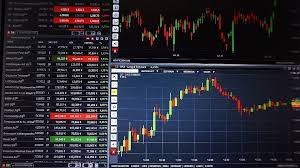In the fast-paced world of currency trading, having the right tools can make a significant difference in determining your success. The best indicators for forex trading Trading Platform VN provides traders with an array of resources—including various indicators that can help in analyzing market trends. This article will explore some of the best indicators for Forex trading, their functionalities, and how they can enhance your trading strategies.
Understanding Forex Indicators
Forex indicators are mathematical calculations based on the price, volume, or open interest of a security. They are used by traders to forecast future market movements and make informed decisions. Indicators can be primarily classified into two categories: leading and lagging indicators. Leading indicators attempt to predict future price movements, while lagging indicators confirm trends that are already in motion. Understanding these indicators is essential for developing an effective trading strategy.
1. Moving Averages
Moving averages are one of the most commonly used indicators in Forex trading. They smooth out price data to identify trends over a specific period. The two main types of moving averages are the Simple Moving Average (SMA) and the Exponential Moving Average (EMA). The SMA calculates the average price over a certain number of periods, while the EMA gives more weight to recent prices, making it more responsive to new information.
Trade decisions can be made based on crossovers between the short-term and long-term moving averages. For instance, when a short-term moving average crosses above a long-term moving average, it generates a buy signal, while a crossover below generates a sell signal.
2. Relative Strength Index (RSI)
The Relative Strength Index (RSI) is a momentum oscillator that measures the speed and change of price movements. The RSI ranges from 0 to 100 and is commonly used to identify overbought or oversold conditions in a market. Generally, an RSI above 70 suggests that a currency pair is overbought, while an RSI below 30 indicates that it is oversold. Traders using RSI often look for divergence with price action, as it can signal potential reversals.

3. Moving Average Convergence Divergence (MACD)
The Moving Average Convergence Divergence (MACD) is a versatile indicator that combines elements of trend and momentum analysis. It consists of two moving averages: the MACD line (the difference between the 12-period and 26-period EMA) and the signal line (the 9-period EMA of the MACD line). When the MACD line crosses above the signal line, it generates a bullish signal, whereas a cross below signifies a bearish signal.
Additionally, the MACD histogram provides insight into the strength and direction of the trend, allowing traders to identify potential entry and exit points.
4. Bollinger Bands
Bollinger Bands are a volatility indicator that consists of a middle band (SMA) and two outer bands that are standard deviations away from the middle band. This indicator helps identify overbought or oversold conditions and potential price breakouts. When the price touches the upper Bollinger Band, it may signal that a market is overbought, while touching the lower band may indicate that it is oversold.
Furthermore, traders often look for ‘squeeze’ patterns, where the bands tighten, signaling a potential increase in volatility and price movement.
5. Fibonacci Retracement
Fibonacci retracement levels are drawn using horizontal lines to indicate areas of support or resistance at the key Fibonacci levels before the price continues in the original direction. Traders apply these levels by identifying the high and low points of a recent trend and plotting horizontal lines at the key Fibonacci levels (23.6%, 38.2%, 50%, 61.8%, and 100%). These retracement levels help traders identify potential reversal points and significant support and resistance levels.

6. Stochastic Oscillator
The Stochastic Oscillator is another momentum indicator that compares a particular closing price of a currency pair to its price range over a specified period. The indicator ranges from 0 to 100, and values over 80 indicate overbought conditions, while values under 20 indicate oversold conditions. This can be used alongside other indicators to confirm trading signals. Divergence between the Stochastic Oscillator and price can also hint at potential reversals.
7. Average True Range (ATR)
The Average True Range (ATR) is a volatility indicator that measures market volatility by decomposing the entire range of an asset price for that period. The ATR is particularly useful for assessing market conditions and determining position sizing. Traders use the ATR to decide on the size of their stop losses or to make trading decisions by gauging the average price fluctuations.
8. Volume Indicators
Volume indicators are essential for confirming trends and signals generated by price-based indicators. A common volume indicator is the On-Balance Volume (OBV), which aggregates volume flow to show how volume contributes to price movement. A rising OBV suggests that buyers are willing to step in, while a falling OBV indicates that sellers dominate the market.
Conclusion
Choosing the right indicators for Forex trading depends largely on your trading style and the specific strategies you implement. Using a combination of indicators can provide a more comprehensive market analysis and improve your decision-making process. Indicators like moving averages, RSI, MACD, and Bollinger Bands each offer unique insights that, when combined with proper risk management and trading discipline, can enhance your trading performance.
Utilizes these indicators effectively to develop a well-rounded trading strategy, and remember always to stay updated with market news and developments to complement your trading tools.